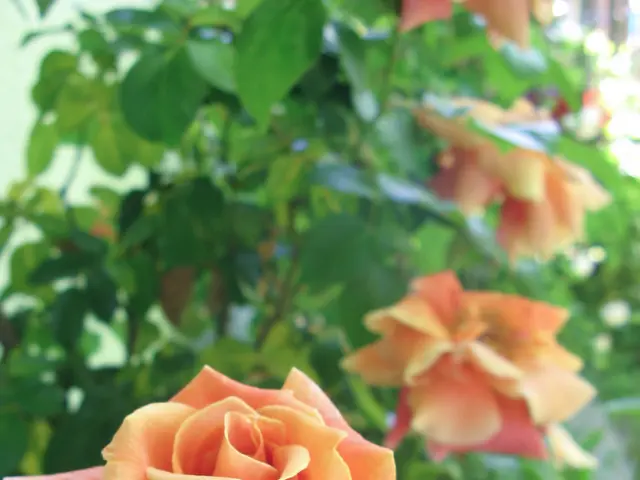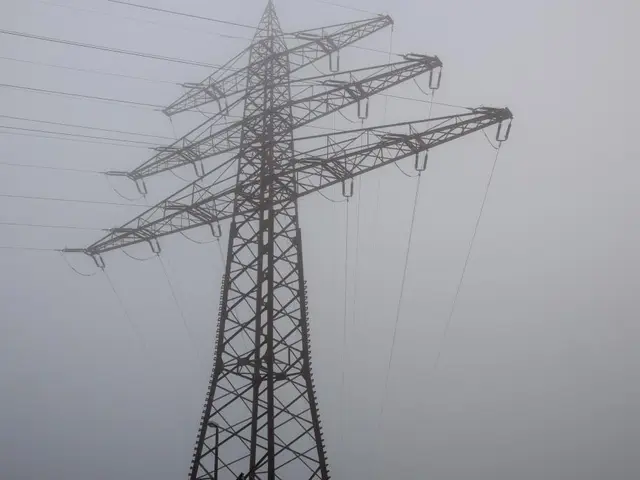8 Indoor Plants to Steer Clear Of for Successful Home Cultivation
Indoor gardening has become all the rage, with folks eager to bring a touch of nature indoors. And who can blame them? Houseplants aren't just pleasing to the eye, they also offer a sense of peace and tranquility, as plant consultant Britt Parrish puts it.
However, not every plant is cut out for indoor living. Some struggle with lower light and humidity levels, whereas others simply need more space than most homes can offer. Fortunately, our experts swoop in to save the day with a list of problematic plants to avoid and some better alternatives.

If you're hankering to grow carnivorous plants indoors, pick ones that do well inside. Venus fly traps and North American pitcher plants (Sarracenia), for example, are popular, but they don't excel as houseplants. In their natural habitat, they grow in sunny, swampy spots and go dormant in the winter. If you don't have room for dormant plants in your fridge, they suggest growing tropical butterworts (Pinguicula). These hail from Mexico and thrive in bright windows, preferring normal indoor temperatures. Bonus: they love chomping on fungus gnats!

Colocasia and Caladiums, commonly called Elephant Ears, aren't suitable for indoor growing. They require high humidity, bright light, and consistently moist soil – all of which can be difficult to achieve indoors. Plus, they go dormant during the cooler months, which can lead to confusion about their health. If you live in a colder climate, dig up their corms (similar to bulbs) for winter storage rather than trying to grow them as houseplants.
If the bold, tropical look of Colocasia and Caladiums appeals to you but you're after something more suited to indoor life, consider Alocasia. These plants offer a similar vibe but are generally more adaptable to indoor conditions and tolerant of missed waterings. Keep an eye out for pests like spider mites and thrips, but overall, they're easier to keep happy indoors.
Majesty palms may look like perfect indoor plants, but they are actually high-maintenance, requiring lots of bright indirect light, high humidity, and just the right amount of water. Most homes are too dry and dim for them. If you want a palm that thrives indoors, opt for Parlor Palm instead. These offer palm vibes with a lot more forgiveness and ease in their care.
Tuberous and wax begonias need a winter dormancy, during which they die back to a tuber that must be stored and replanted in the spring. Meanwhile, wax begonias can technically grow indoors, but they likely won't bloom as well or look as tidy as they do outside. Rhizomatous and cane begonias, on the other hand, thrive in bright, indirect light and average home humidity. While their flowers may not be quite as showy as those of tuberous or wax begonias, their huge variety of leaf shapes, colors, and patterns more than make up for it.
Some food crops, such as grains, beans, squash, melons, and tomatoes require more space, sunlight, or water than a typical home can offer. However, other edible plants are well-suited to container life and can happily spend the winter indoors before heading outside for summer. Herbs and spices like ginger, turmeric, lemongrass, rosemary, and bay laurel all do well in pots.
Banana trees seem like they should be easy to grow indoors, but they are actually quite demanding. They need lots of sun, warmth, humidity, and space to thrive – conditions that most indoor setups can't deliver enough of. With its similar tropical vibe and lush leaves, bird of paradise is a much better indoor choice. It thrives in indirect light, needs less humidity and pruning than banana trees, and is more compact.
Certain Ficus, such as the weeping fig (Ficus benjamina) and fiddle-leaf fig (Ficus lyrata), are iconic houseplants, but many people struggle to keep them happy. They are sensitive to changes in light and will drop a bunch of leaves to let you know when they're displeased. A better option is the rubber plant (Ficus elastica), which is much more adaptable to indoor environments and comes in many attractive cultivars. "I'm currently loving the cultivar 'Belize' (aka 'Ruby'), which has pink variegation on the leaves, and 'Chloe,' which has wider, rounder leaves than other types," says Claire Hamell, a houseplant expert and board member of the Indoor Plant Society and the Delaware Valley Branch of the American Begonia Society.
Oleander may look appealing with its lush foliage and trumpet-like flowers, but it's highly toxic. The plant contains cardiac glycosides, which can cause severe symptoms like vomiting, seizures, or even heart failure if ingested. To make matters worse, oleander regularly drops its leaves and flowers, making it a risky indoor choice. For a safer flowering option, try African violets or bromeliads, which are nontoxic, easier to care for, and thrive in bright, indirect light.
- Martha Stewart might find it interesting to know that Venus fly traps and North American pitcher plants, while popular as carnivorous indoor plants, don't excel as houseplants due to their need for sunny, swampy habitats and winter dormancy.
- When choosing houseplants, one should be aware that certain plants like Colocasia and Caladiums, which are known for their bold, tropical look, aren't suitable for indoor growing due to their high humidity, bright light, and consistently moist soil requirements.
- For those seeking indoor plants that offer a similar vibe to Colocasia and Caladiums but are more adaptable, Alocasia is a recommended alternative, known for its relative ease of care and tolerance of missed waterings.
- Majesty palms, whilst attractive, are high-maintenance indoor plants despite their seemingly ideal appearance, requiring lots of bright indirect light, high humidity, and the right amount of water – factors that most homes may lack.
- Those passionate about growing edible plants indoors might opt for herbs and spices like ginger, turmeric, lemongrass, rosemary, and bay laurel, which thrive in pots and can happily spend the winter indoors before heading outside for summer.








